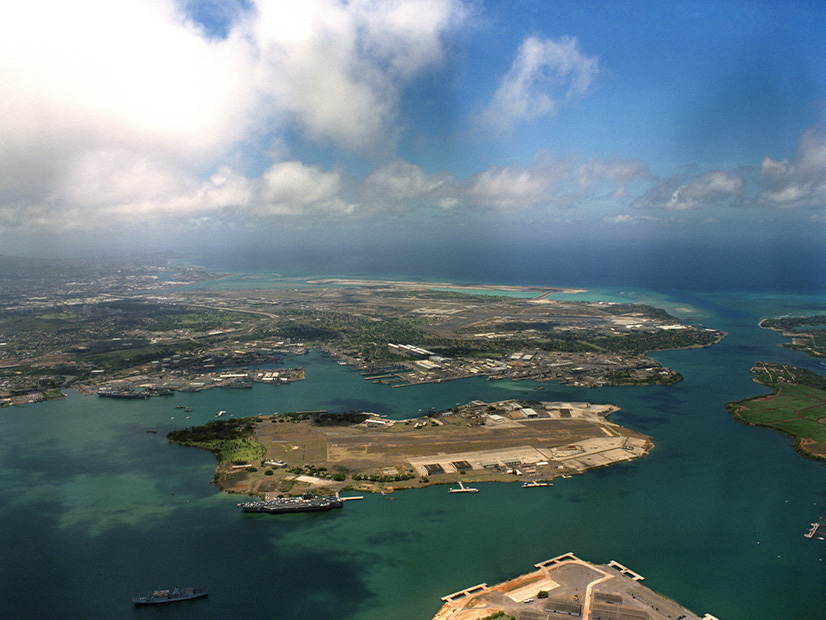
Ameresco announced last week that it will partner with Bright Canyon Energy to build the Kūpono Solar Project, a solar-plus-battery storage facility in Pearl Harbor.
The companies, operating under the joint Kūpono Solar Development Company, say the Hawaii project is designed to produce 42 MW and will include a 168-MWh battery energy storage system (BESS) that should provide enough energy to power approximately 10,000 homes on Oahu at night. The joint company also claims the project will reduce more than 50,000 tons of CO2 annually.
Kūpono Solar signed a 37-year land lease with the U.S. Navy to build the project on 131 acres within the Navy’s West Loch Annex of Joint Base Pearl Harbor-Hickam. The company will operate the facility under a 20-year power purchase agreement with Hawaiian Electric (HECO).
Kūpono Solar has no connection with the failed West Loch BESS, which HECO cancelled earlier this year. (See HECO Cancels Oahu Battery Storage Project.)
“The Navy is excited to see this joint Kūpono Solar/Hawaiian Electric project move forward for our community’s benefit,” Capt. Randall E. Harmeyer, public works officer for the base, said in a press release.
In light of a recent water contamination fiasco at the Navy’s Red Hill fuel facility that saw approximately 19,000 gallons of fuel spill out of an old storage tank and into Oahu’s water supply, Nicole Bulgarino, Ameresco executive vice president and general manager for federal solutions, said she wanted to assure the company’s commitment to the community.
“We’re trying to be a good developer from a community perspective,” Bulgarino said in an email to NetZero Insider.
“We don’t necessarily want to be looked at as a developer, but truly as a partner, a clean tech partner,” she said. “In this case, the Navy is only the land host. They are not buying any of the power that’s generated. In fact, the power generated by the system is connected directly to a HECO-owned substation. … That power should be serving Oahu. Wherever the load is, is where the power will fall to.”
Kūpono Solar is in the final stages of seeking approval from the Hawaii Public Utilities Commission. The state’s Consumer Advocate came out in support of the project last week, and Bulgarino expects the project will be approved.
“I’m sure there will be some final declarations or requirements that we’ll view and agree to, but it’s a great project. It’s on land that can’t be used for anything else. … We’re hopeful,” she said.
Rebecca Dayhuff Matsushima, HECO vice president of resource procurement, expressed the utility’s support for the project.
“We’re hoping for PUC approval and continuing our work with the Kūpono Solar team,” she said in an email.
If approved, the project’s construction is expected to be completed in early 2024.